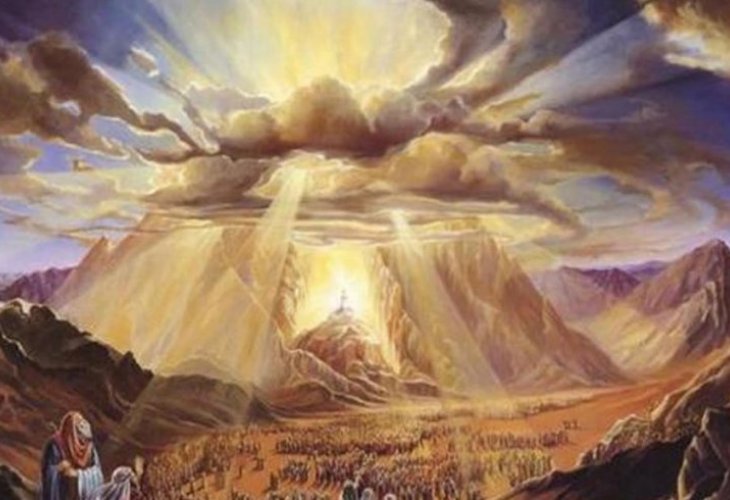In Search of God
When Did We Receive the Torah, and What Is the Oral Torah?
Understanding how the Written and Oral Torah were given, transmitted, and preserved throughout Jewish history

The Torah tells us: “And the Lord said to Moses: Come up to Me on the mountain and be there, and I will give you the tablets of stone, and the Torah and the commandment which I have written to instruct them.” (Shemot 24:12)
At Mount Sinai, Moshe received the Tablets of the Covenant, engraved with the Ten Commandments. During forty days and forty nights, he learned the 613 commandments of the Torah and how to perform them — teachings he later transmitted orally to the people of Israel.
The Torah scroll itself — the Written Torah, was not yet written at Sinai. It was dictated by God to Moshe gradually, throughout the forty years of the Israelites’ journey in the desert. Each section (“parsha”) was written as it was revealed in the Tent of Meeting, until the Torah was completed shortly before Moshe's death.
This completed scroll, consisting of the Five Books of Moshe (Bereishit, Shemot, Vayikra, Bamidbar, Devarim), is what we now call the Written Torah. Before his passing, Moshe gave the complete Torah to the priests and the elders of Israel: “Take this book of the Torah, and place it beside the Ark of the Covenant of the Lord your God, and it shall be there as a witness for you.” (Devarim 31:26)
Thus, the Torah begins with the creation of the world and concludes with Moshe's death on the eastern side of the Jordan River — just before the Israelites entered the Land of Israel.
Did the Israelites Know Their Future?
When the people sinned, such as in the rebellion of Korach, they had no prior knowledge of what was written about them. Only after each event did God command Moshe to record it in the Torah.
For example, Parshat Korach was written only after Korach’s punishment occurred.
The Talmud (Gittin 60a) debates whether Moshe wrote the Torah scroll by scroll over time or only all at once near the end of his life.
Rashi explains: “The Torah was given scroll by scroll — whenever a section was spoken to Moshe, he wrote it down, and at the end of forty years, he joined them together into one scroll.”
In either case, the final Torah that we have today was delivered in full to Israel before Moshe's death.
What Is the Oral Torah?
Have you noticed that in the Written Torah, many commandments are mentioned without instructions? For example:
What exactly is written in a mezuzah?
What are tefillin supposed to look like?
How do we perform shechitah (kosher slaughter)?
What counts as work forbidden on Shabbat?
The Written Torah lists the commandments, but not the details.
The Oral Torah contains these explanations — the how-to of every commandment.
At Mount Sinai, God not only gave Moshe the commandments themselves but also the practical guidance for keeping them.
Moshe then taught and explained them orally to the people.
As it says: “The Torah and the commandment which I have written, to instruct them.” (Shemot 24:12) “To instruct” — meaning, to explain and teach orally. “And the Lord commanded me at that time to teach you statutes and judgments to perform them.” (Devarim 4:14)
The Written Torah tells us what to do, while the Oral Torah teaches us how to do it.
Transmission of the Oral Torah
For generations, the Oral Torah was memorized and passed down from teacher to student. Moshe taught Aaron, Aaron taught his sons, and they taught the elders and the people. This continued through the prophets, the sages, and finally the rabbis of the Talmudic era.
Only centuries later — when the Jewish people faced exile and dispersion, was the Oral Torah written down to preserve it, first as the Mishnah, and later with its commentary, the Talmud.
The Written Torah (Five Books of Moshe) was dictated by God and completed before Moshe's death.
The Oral Torah is the companion explanation — the living instruction that teaches how to fulfill the commandments.
Both were given at Sinai, one written and one oral, forming together a single divine revelation.
In the next section, we’ll continue exploring the structure and parts of the Oral Torah — how it evolved into the Mishnah, Gemara, and Halachic tradition.

